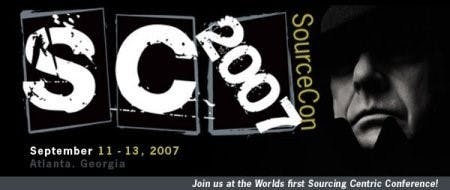Ten years ago, talent sourcers took on social media recruiting. It was new. It was a blank canvas. No one understood how to do it, but intuitively, we knew it was important. And many of us in talent sourcing have the led the way.
Why talent sourcing? Talent sourcers typically were recruiters that understood the hunt for talent. We approached recruiting with a scientist-like precision in identifying potential talent. We kept track of things. We realized that if we contacted a certain number of people, we could fill a job. We also built relationships with the people we were recruiting. Many professionals had us on their speed dials. The best of us became artists of our craft.
Back to our social media recruiting story. We experimented. We made mistakes. We learned. We shared our stories and learned from each other. As it turned out social media recruiting was just part of the game-changing social revolution on the internet. Social media became an essential channel of communication and influence. Oddly enough, people did not read our job ads on social media channels to a greater degree than they did on Monster or CareerBuilder. It seems that people used the social media channel to communicate and build relationships with others.
All was not lost. Recruiting technology was changing. The clunky old applicant tracking systems were being replaced by more nimble and relevant technologies. During the past decade, talent sourcers took on the challenge of automating the sourcing of candidates. What if we could push our advertising to the new social channels as well as the job boards at the same time? And what if we could track the success (or lack thereof) in the respective channels. New platforms such as Jobster, Jobs2Web, and TalentBrew became the talk of the recruiting community. These technologies incorporated Google as it became the dominant portal to the internet. As it turned out, as much as we tried, we could not automate relationships. It seems that job ads still needed to be viewed and read by your target audience despite being pushed to all channels. Talent sourcers leveraged technology to their artistry in identifying target talent and discipline of tracking those results.
About five years ago the recruiting platforms were morphing into what were called recruitment marketing platforms. Essentially CRM’s (Candidate Relationship Management) were integrated into the current job distribution and search engine optimizing features of the existing platforms. We borrowed ideas from the consumer products marketing folks because the web behaviors of a job seeker resembled that of a consumer. We learned the fundamental lesson that it was no longer about us, but about the consumer-like candidate. This consumer candidate was not only using the web for social interaction, but the potential talent was also were using it for research on how your treated or mistreated people that applied for your jobs. As it turned mattered how we treated our candidates. It seems that side trip to Glassdoor became part of the candidate journey to applying for a job. Recruitment marketing was expanded to branding from just saying positive things about your organization to branding the job and the job application process; the talent branding emerged.
There was an adverse side effect of the recruitment marketing approach; it involved using the CRM’s to mass email target audience’s information on a job. It was called spray and pray. Spray and pray is a close relative to post and pray. Instead of posting an ad on a job board, the recruiters mass emailed the job descriptions to the target audience. The thinking was, mass emailing would overcome the limitations of job advertising. Mass emailing would ensure that the target audience learned about the job. As it turns out spam is great with eggs, but not so great in inboxes.
Talent sourcers are once again being called on to lead the way. Another stretch assignment. Recruitment marketing was added to our desired skillset. Why talent sourcing? Who is in a better qualified to understand the importance of a relationship than a talent sourcer. It is part of our DNA. It is ingrained in activities. It is an essential component of the artistry of our craft. So how do we integrate marketing into recruiting and talent sourcing? I glad you asked. I invite you to join me in a conversation at SourceCon Atlanta on that topic.
Ten years ago, one hundred or so recruiters that specialized in talent sourcing convened in Atlanta. It was a gathering of a group of recruiters that were a little different. Different in that we loved to hunt for the right talent. Different in that we build relationships along the way. Different in that designed processes that were measurable, repeatable and scalable. And different in that we were flexible, adaptable, and commitment to learning new and better ways. The community was created, and we caught a vision that talent sourcing could offer a remarkable career experience. And thus, the ongoing story of how the weird kids became the cool kids.

